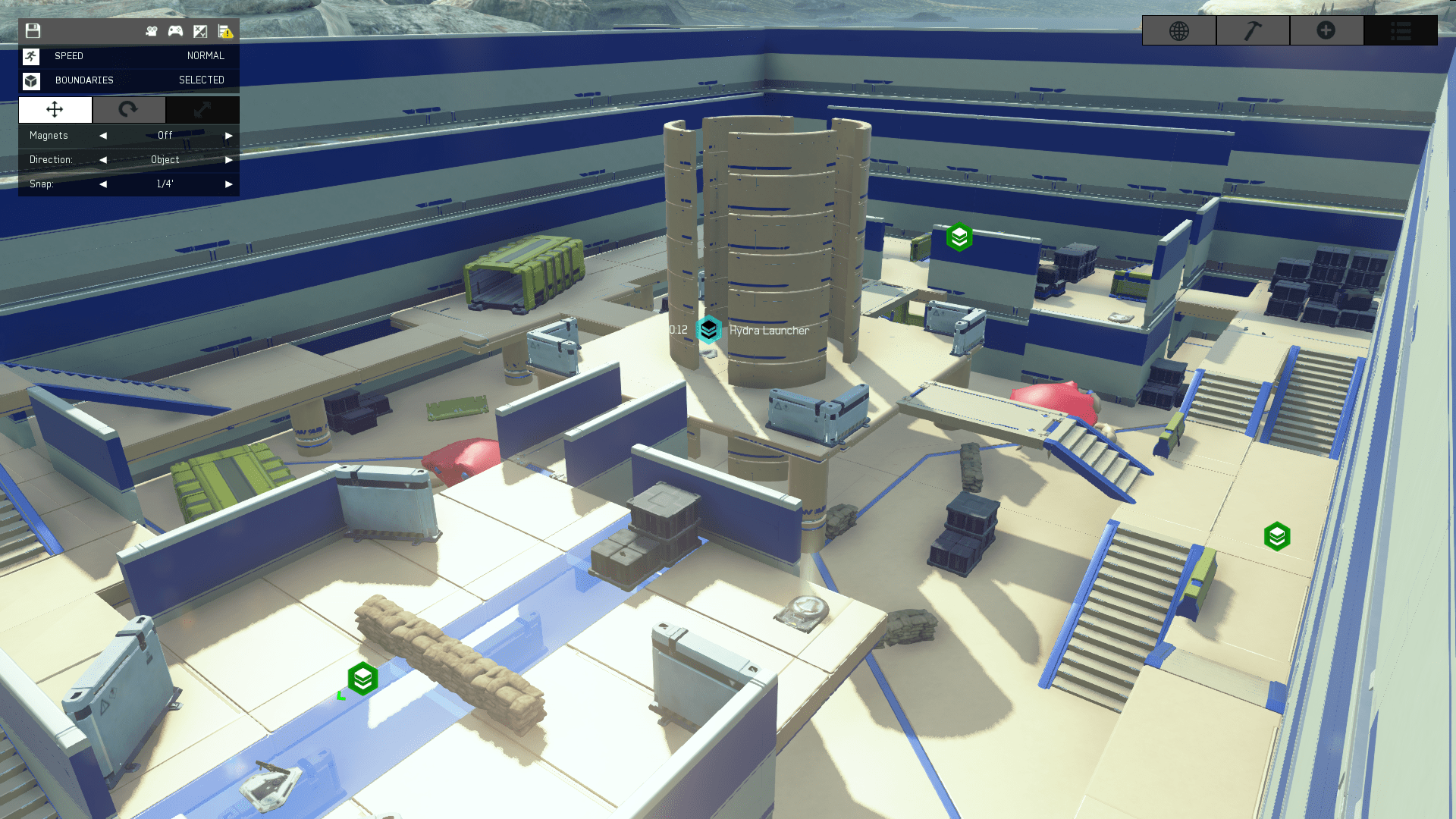
Halo 5 Free For All Map
Project Specs.
4 players
FFA Deathmatch
Produced in Halo 5: Forge
Created over 5 weeks
Solo project
Planning and Learning
The first phase of this project involved getting familiar with the Halo 5: Forge editor and deciding whether or not make a team or free for all map. To get familiar with the editor, I began with watching a couple of guides before just starting to make some basic structures and experimenting with item spawners. I then explored the different objects and materials available to try and come up with an idea for my map.
Eventually I decided to create a UNSC inspired FFA map. This helped me focus my vision of the map since I was restricting myself to a specific set of objects. It also helped me decide what weapons to use as I stuck with human weapons to fit the theme of the map.
Once I had decided on a theme and the gamemode I wanted to design for, I began sketching out what I wanted to do for the layout of the map. The first thing I decided was I wanted to have very identifiable areas so players could tell where they are on the map at all times.
POE Style
In order to make sure every part of the map is easily identifiable, I decided to use a Point of Engagement style, similar to how larger scale multiplayer maps in games such as Apex Legends work. This style involves designing several unique locations around the map and creating interesting transitions between them. The asymmetric nature of this style of map development works well for FFA gamemodes because it allows for more dynamic map design without having to worry about one team having an advantage over another due to uneven sides.
The first POE I developed for this map was the large spire in the middle of the map. I created this POE first because the center of the map is the most important part since it acts as a hub for players to move to and from other locations. It also provides very important sightline blockers for weapons like the DMR or the sniper rifle.
After creating the central spire, I created the rest of the smaller areas around the edges of the map one at a time, connecting the ones in the center of each side to the central spire. To prevent players from camping in one of the POEs, there are multiple routes to each of them, along with several jump pads placed around the map for fast traversal.
Power Weapons
The weaponry on this map is all human equipment to fit the theme I was going for. Because of this, some of the more classic power weapons like the energy sword or gravity hammer were off the table, but I still wanted power weapons to be an important part of the map. I also wanted there to be the potential for all four players in the lobby to have a power weapon so it never feels like someone doesn’t have a fighting chance.
When deciding what power weapons to place on the map, I based them on the POEs and shape of the map so that each one is viable in a different situation or location.
The sniper rifle on this map is very powerful when used from the sniper’s nest area which is higher up with good cover, but it must be acquired in a very close range area where it is far weaker.
The rocket launcher is a very powerful weapon when used properly, but with the map being very close quarters, it can cause someone to eliminate themselves instead of the intended target.
The hydra launcher is a very reliable weapon that is good in most situations on the map, but it must be acquired in the most dangerous part of the map with the most open sightlines and traversal routes through it.
The SAW is the most consistent of the power weapons available on this map, but it has the slowest time to kill to balance its safer use.
Project Takeaways
Over the course of this project, I learned how to design a small and balanced multiplayer experience using an asymmetrical map design. All of the levels I had worked on before doing this arena were single player maps where the player moves from the start to the finish with things to do in-between those points, but multiplayer maps work very differently. This project helped me develop the skills needed to make an arena where every part of the map can be used for multiple purposes and how to utilize sightlines and implement ways for different skill levels to interact with the space.
During this project, I also learned how to create spaces where different tactics are more effective while keeping weapon options balanced. I used a mix of close and long range areas to give all weapons available a purpose. Placing power weapons in places they may not be the most effective immediately also helps keep them balanced so that players have to work a bit more to make them as useful as possible.






